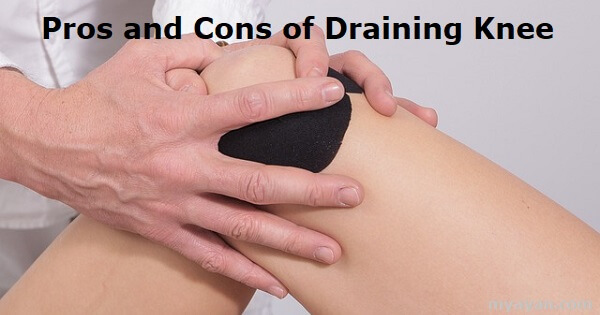You may have to encounter different procedures after a knee replacement surgery. Draining the knee is one such procedure (done during knee aspiration), which refers to removing the fluid from your operated knee joint. This procedure is often conducted when there is excess fluid accumulation around the knee joint as a result of inflammation, infection, or trauma. The medical process does have its own set of benefits and drawbacks. This guide focuses on the pros and cons of draining the knee. Let’s continue.
Knee Aspiration is a medical procedure during which, a needle is inserted into the knee joint to remove fluid. It can also be known as “Knee Arthrocentesis”, 'joint aspiration', or 'fluid aspiration'. The collected fluid is then analyzed for any signs of infection, inflammation, or other abnormalities.
The main objective of knee aspiration is identifying and treating conditions including arthritis, gout, bursitis, and tendinitis. In some cases, it may also be used to help diagnose other conditions such as infections or cancer. Knee aspirations are usually done in an outpatient setting and can be done quickly.
The doctor operating the procedure explains the risks and benefits of knee aspiration as well as what to expect during the procedure. During the procedure, a local anesthetic is typically used to numb the area around the knee joint so that it doesn't hurt during the process. Patients may also experience some pain or discomfort while fluid is being withdrawn from the joint depending on how much fluid needs to be removed and wherein the knee needs to be taken out.
Afterward, doctors will examine the fluid for signs of infection or other abnormalities such as crystals. Depending on what is found, different treatments may be prescribed such as antibiotics, corticosteroids, or rest and physical therapy. In some cases, aspiration may need to be repeated multiple times in order to properly diagnose and treat a condition.
The following are some major pros of draining the knee you should be aware of:
Draining the knee can help reduce swelling by removing excess fluid that has built up around the joint. This reduces pain and discomfort and helps improve the range of motion in the joint.
Draining the knee can also aid in preventing infections by eliminating pockets of fluid that would otherwise be a breeding ground for bacteria or other harmful microorganisms.
By reducing inflammation, draining the knee can improve mobility as well as flexibility. This could help you move more freely during rehabilitation exercises and everyday activities.
Excess fluid often causes additional pain following surgery, so draining it away will provide relief from post-surgery pains.
During the procedure, medical practitioners can also take a sample of the fluid and analyze it to determine if there are any underlying issues that may require further treatment.
Though the procedure has its side of benefits, there are some common to severe Cons of Draining the Knee.
Draining the knee is a painful procedure since a needle has to be inserted into the joint capsule for extraction. Additionally, many people may find this process uncomfortable or even frightening.
The insertion of a needle during draining carries some risk of infection as bacteria can be introduced into the body through an unsterile procedure.
People with allergies to certain medications used during draining could experience adverse reactions such as rashes, itching, or difficulty in breathing.
Draining the knee does have its limitations, and may not always be effective as a long-term solution for problems such as arthritis or bursitis.
The insertion of the needle could cause some scarring around the site of injection if not done properly, which may lead to further pain and discomfort. Additionally, these scars can also be cosmetically unappealing.
Conclusion
After considering the pros and cons of draining knee effusion, each patient needs to weigh their options carefully, as the decision should be made with qualified medical advice. Ultimately, draining a knee effusion can improve quality of life by relieving pain and provide a valuable opportunity to diagnose underlying causes.
However, readers must always remember possible complications that may arise due to this procedure. For example, the infection can easily enter an open wound and cause further damage. Individuals should consult with their doctor before committing to any medical procedures for more information and insight into the risks involved. Through informed decisions backed up by sound medical advice, staying safe while achieving objectives of better health outcomes are attainable goals.

Draining the knee is considered a safe procedure when done by an experienced medical professional. However, it's still important to weigh the risks and benefits of this operation before committing to it.
The most common complication associated with knee aspiration includes infection, allergic reactions to medications used during the procedure, scarring, and limited effectiveness as a long-term solution for certain conditions.
This depends on the individual’s condition and any advice their doctor provides. Generally speaking, draining the knee may be necessary during flare-ups and after surgery. Maintaining regular communication with your doctor is important to determine how often you should drain your knee.
The primary benefits of draining the knee include reducing swelling, preventing infection, enhancing mobility, and providing potential treatments for underlying issues. It can also provide post-surgery pain relief and help diagnose conditions such as gout or arthritis.